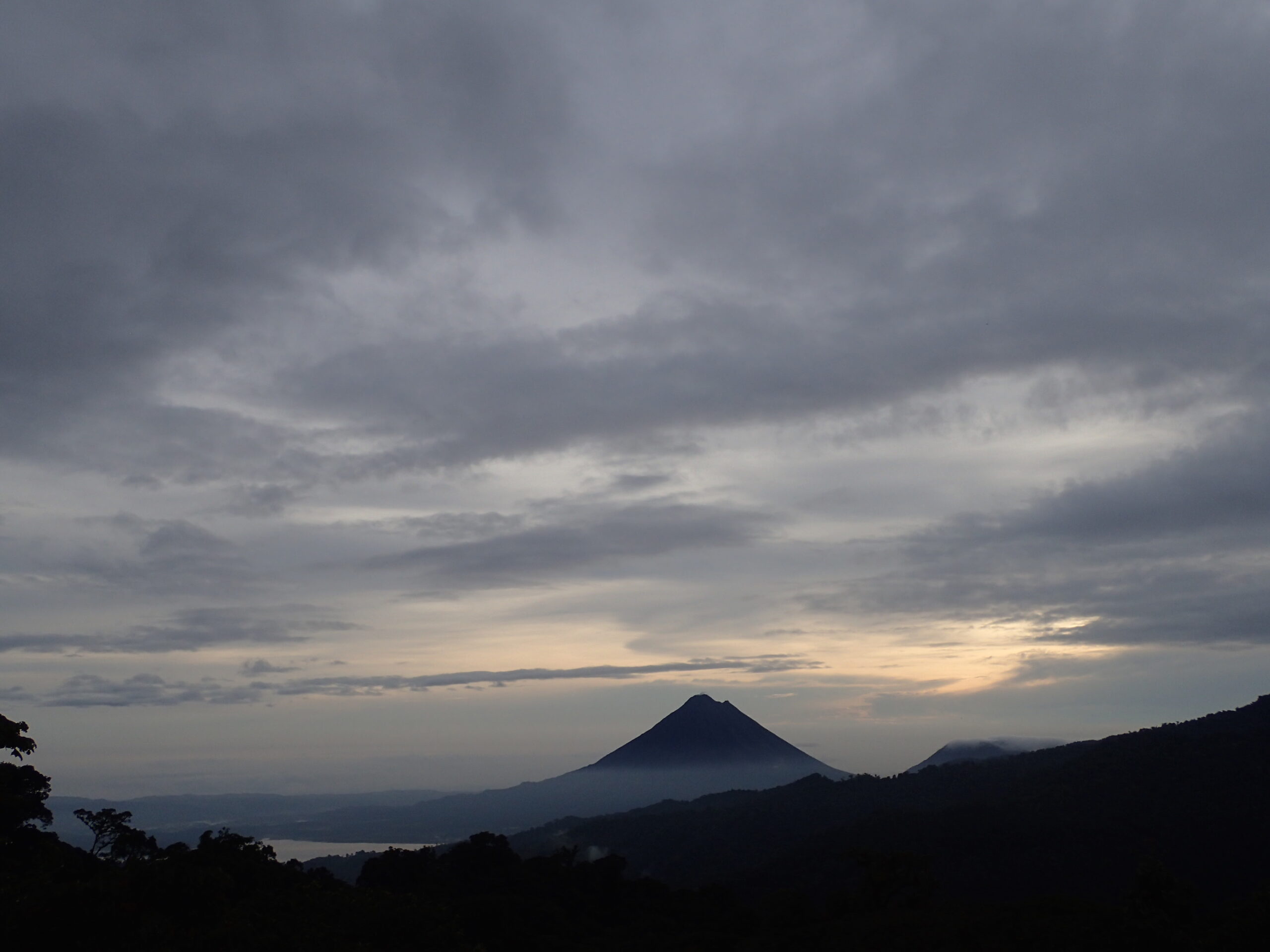
The Effect of Epiphyllous Lichen Cover on Leaf Water Retention
R. Preston Harden and Amanda T. Rugenski

Introduction
Leaf water shedding is an important process in tropical plants. Drip tips have evolved in plants to prevent prolonged water retention that can lead to pathogenic fungal colonization and decreased gas exchange on stomatal sites.
Lichen growth on leaves is also common in tropical regions due to the high humidity. Many studies have evaluated the effect water has on the epiphyllous colonization of lichen and bryophytes (Burd 2007, Coley & Kursar 1996, Coley et al. 1993 & Ivey and DeSilva 2001).
Lichen may affect the physical texture or polarity of a leaf’s surface which would impact its ability to retain water.
We tested the effect that lichen have on the leaf’s ability to shed water in two plant families with different drip tip morphologies across a gradient of lichen cover.
Methods
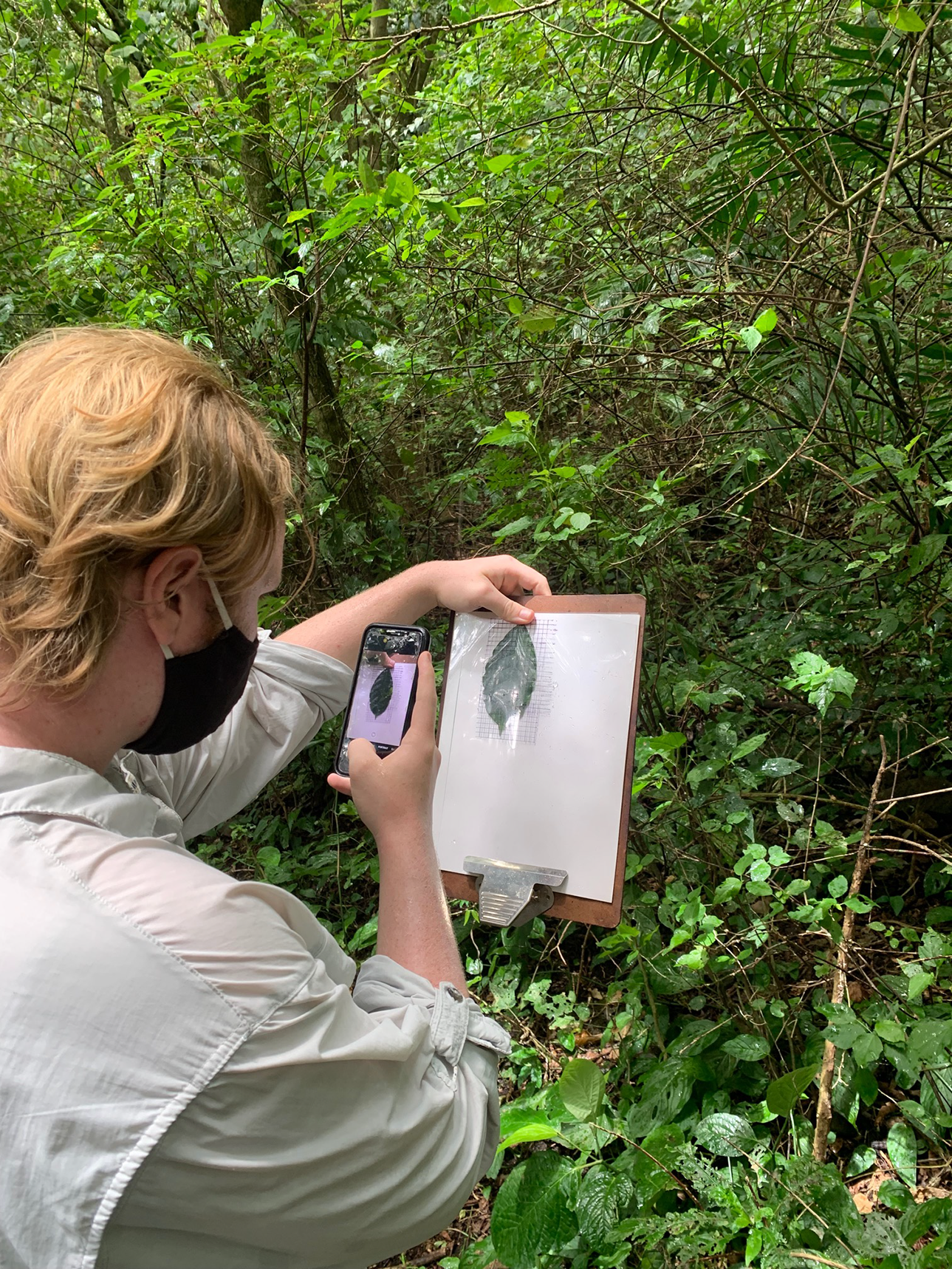

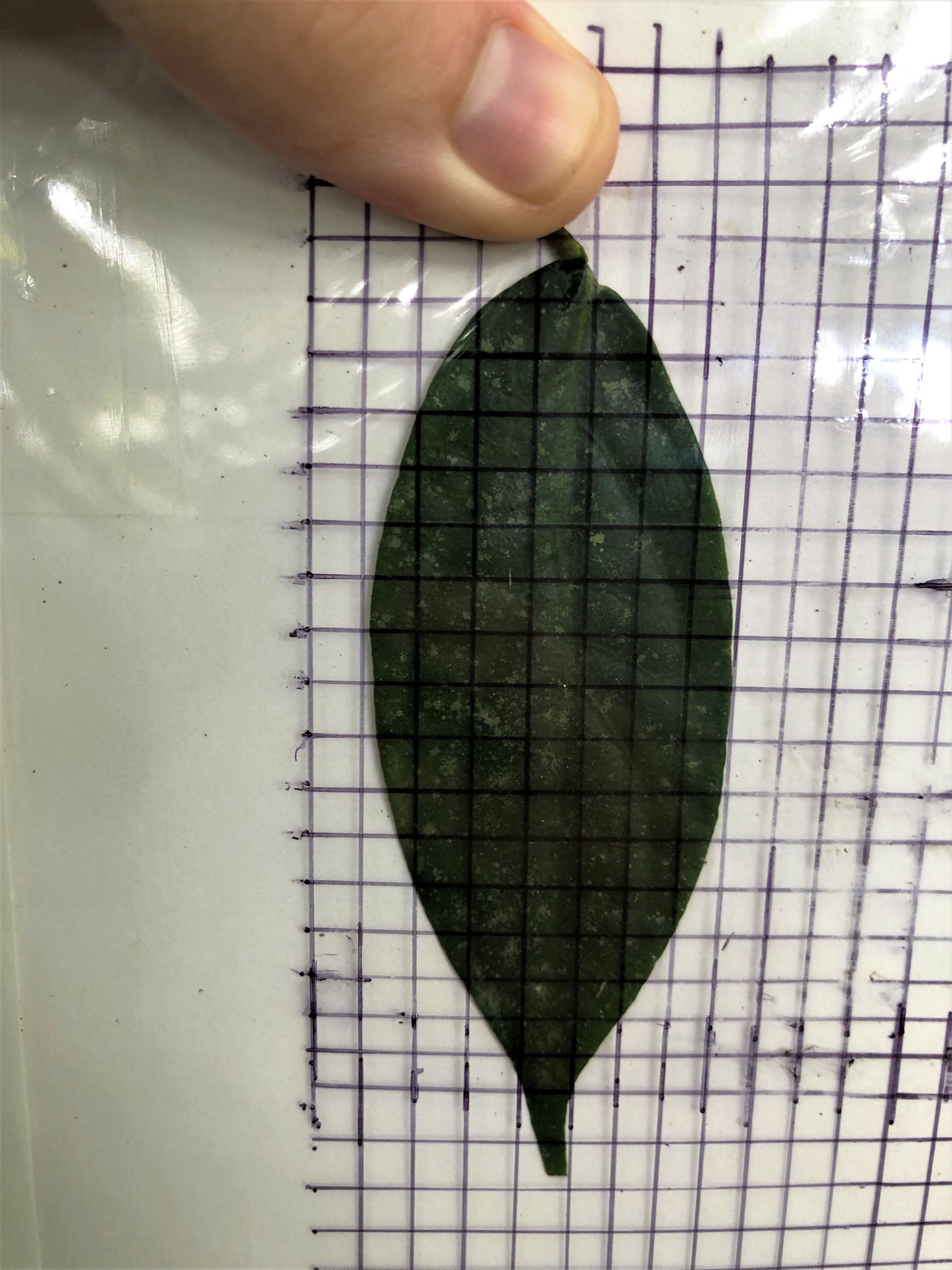
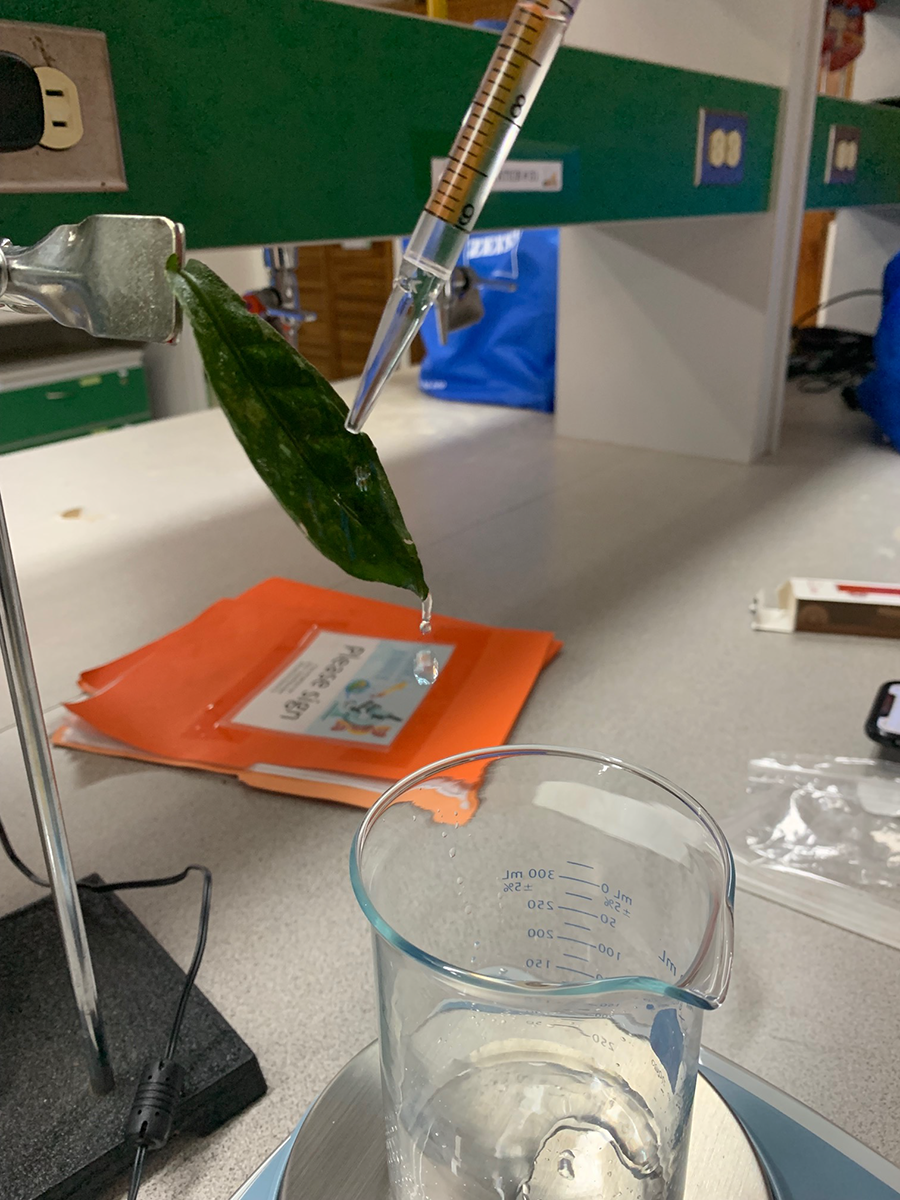

Epiphyllous lichen cover increases leaf water retention on Piperacae (narrow drip tip) leaves but not on the Rubiaceae (broad drip tip) leaves.
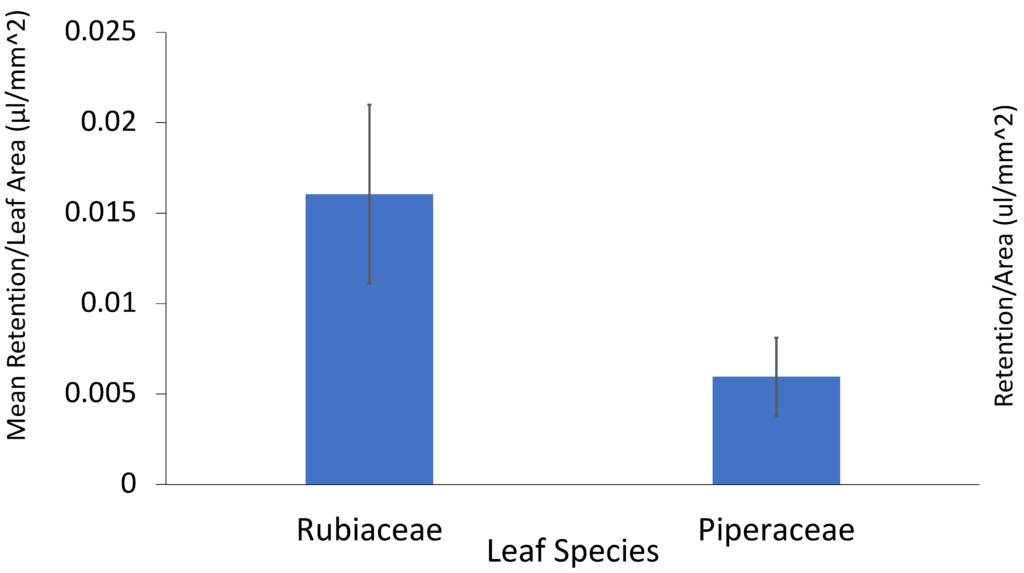

Results & Discussion
There was significantly more water retained per leaf area in the Rubiaceae (broad) leaves which was expected because the drip tips are much shorter than the Piperaceae (narrow) leaves. However, there may be other mechanistic reasons the water retention differs between the two families (i.e., leaf surface polarity or trichome structures) that were not tested.
There was a positive correlation between lichen percent coverage and water retention per leaf area that was significant for the Piperaceae leaves (r2 = 0.27, p = 0.02). The correlation was not significant for the Rubiaceae leaves (p = 0.12). Lichen cover may only have slight effect of increasing leaf water retention. It is possible that, with a larger sample size and range of leaf sizes, this effect would be more pronounced.
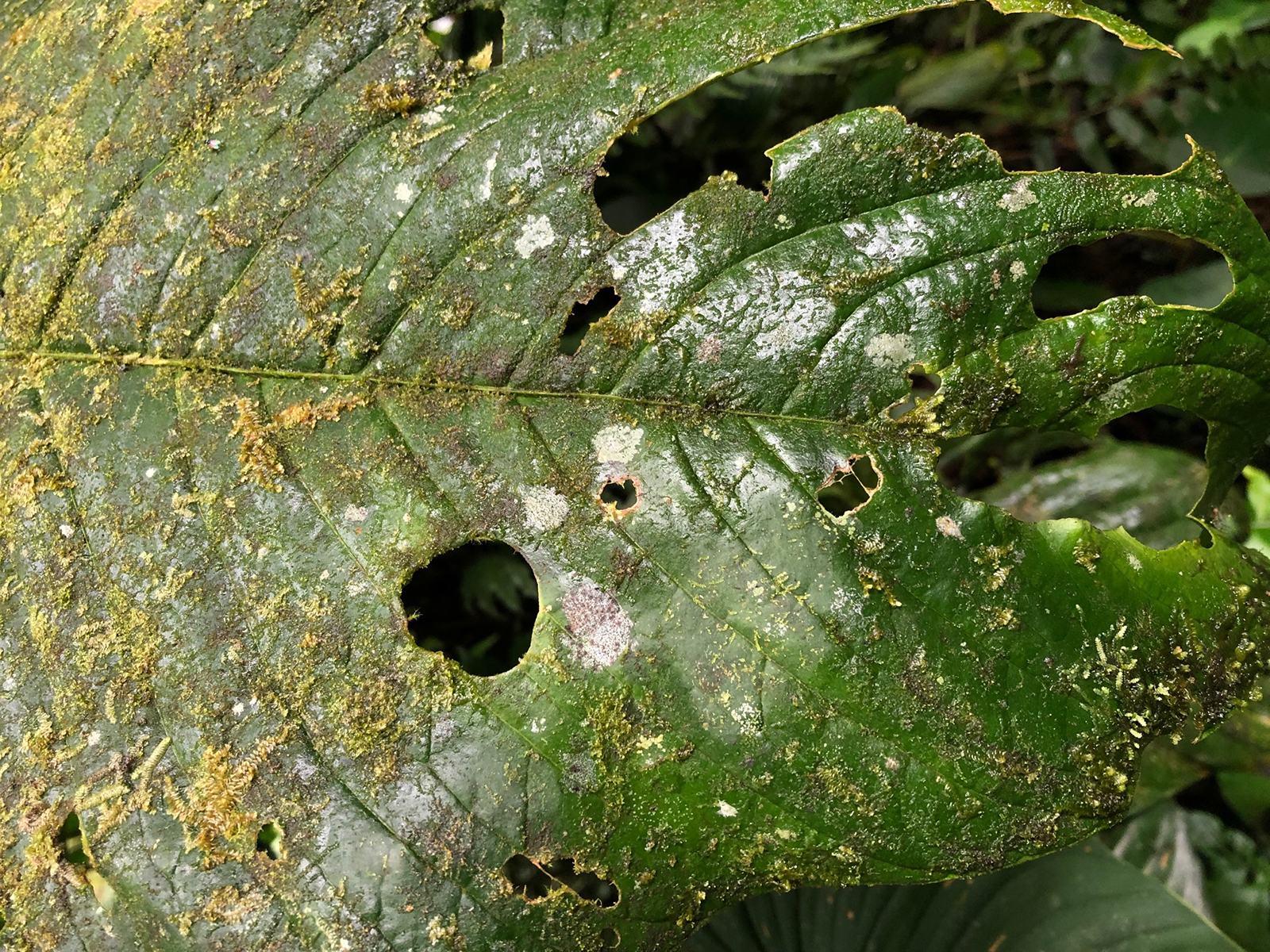
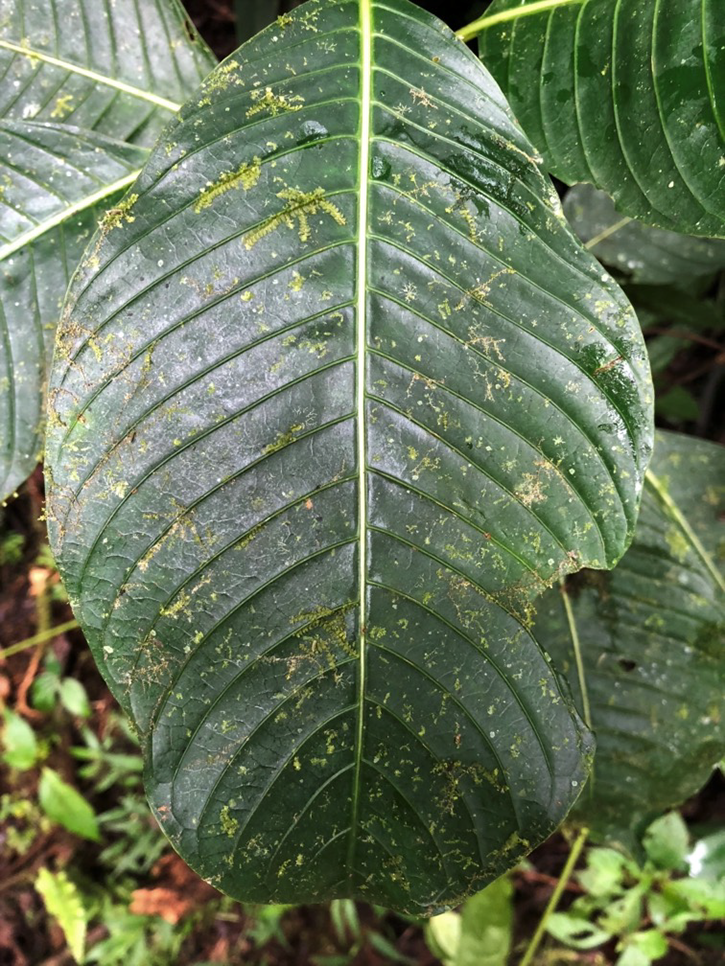
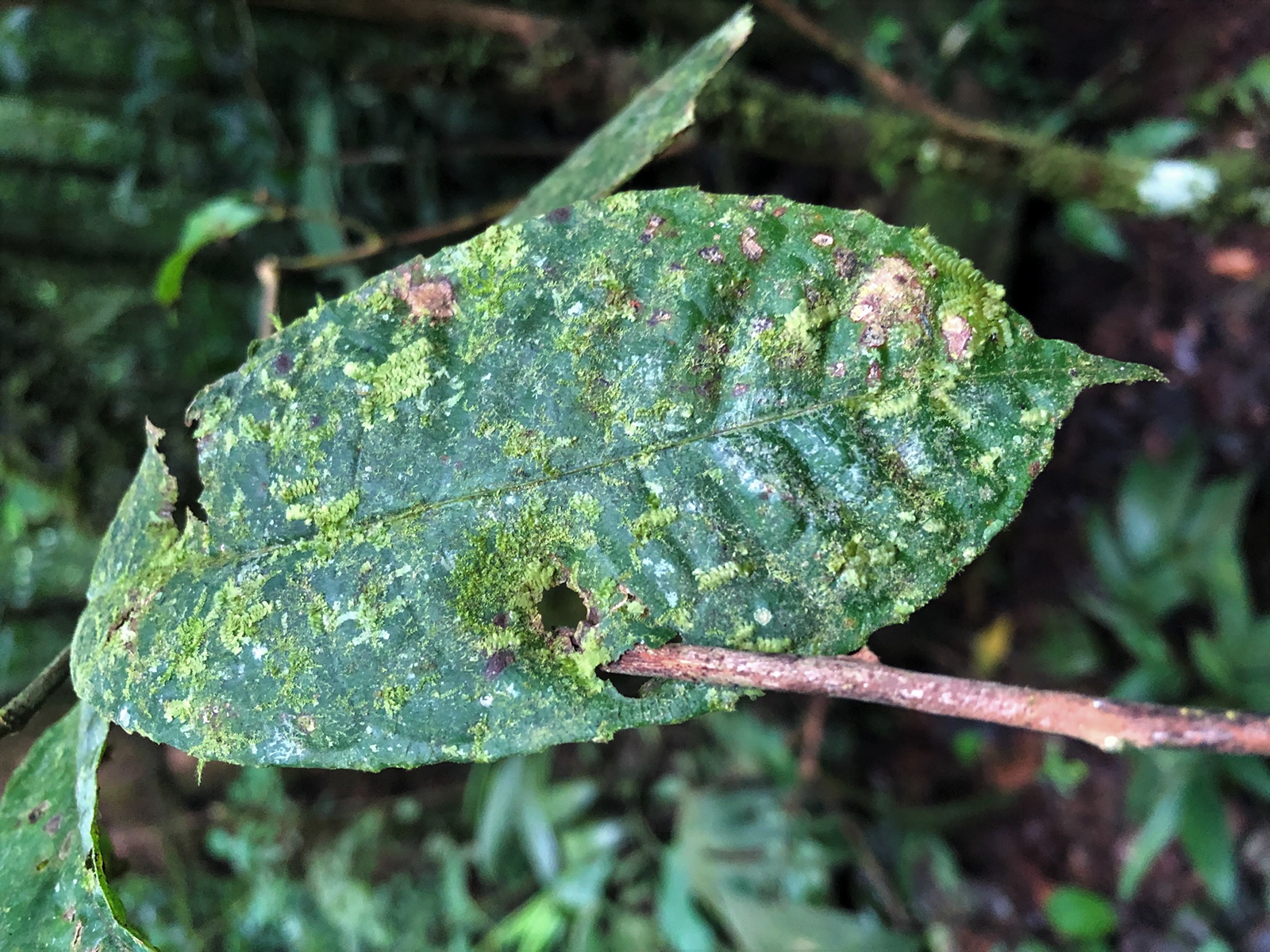
Acknowledgements & Literature Cited
I’d like to thank the amazing staff at CIEE Monteverde, Costa Rica for for providing me with lab space and access to my study site. I’d also like to thank Elizabeth Shaffer for assisting me in the transects.
Burd, M. (2007). Adaptive Function of Drip Tips: A Test of the Epiphyll Hypothesis in Psychotria marginata and Faramea occidentalis (Rubiaceae). Journal of Tropical Ecology, 23(4), 449-455
Coley, P.D., & Kursar, T.A., (1996). Causes and Consequences of Epiphyll Colonization, . pp. 337–362
Coley, P., Kursar, T., & Machado, J. (1993). Colonization of Tropical Rain Forest Leaves by Epiphylls: Effects of Site and Host Plant Leaf Lifetime. Ecology, 74(2), 619-623
Ivey, C., & DeSilva, N. (2001). A Test of the Function of Drip Tips. Biotropica, 33(1), 188-191
Download Original PDF of Poster
